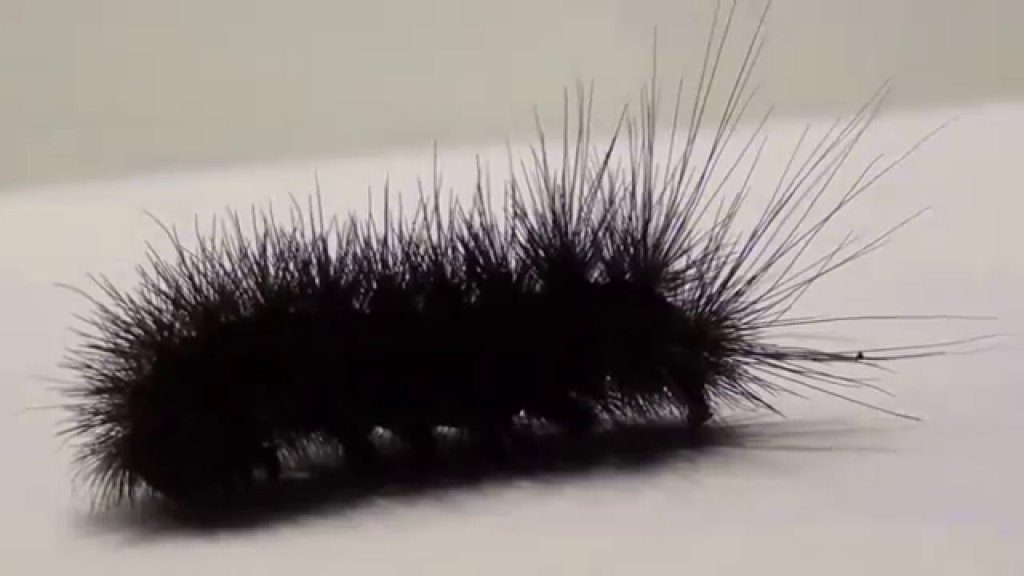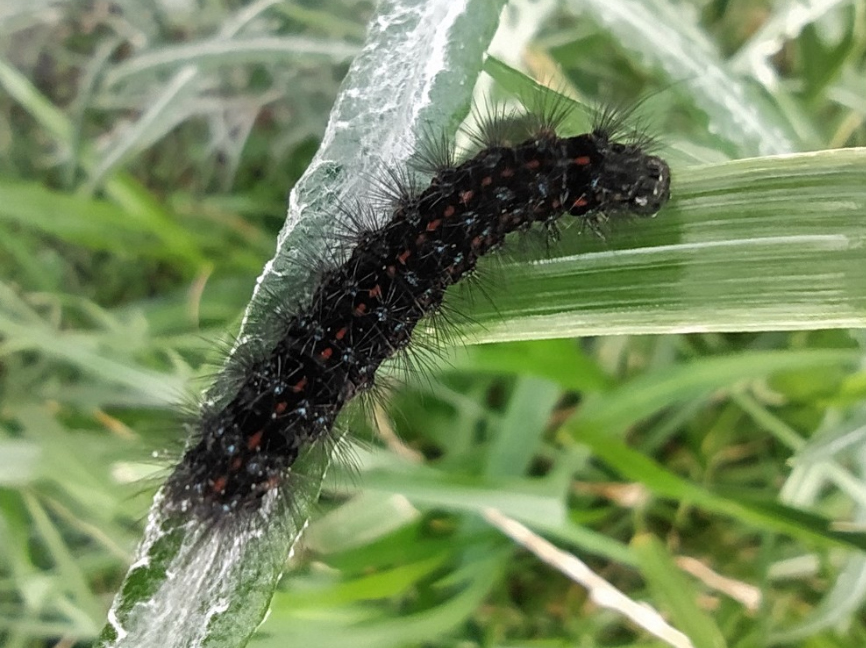The world is full of beautiful and many different kinds of animals that all play a part in the complex web of life. Among these, it’s often interesting to see fuzzy black caterpillars crawling on leaves or twigs. Their dark, blackish-brown color and dense covering of fine, bristly hairs make them stand out.
We look at what makes them unique, how they live, and how important they are to the ecosystem.
This guide will give you essential information about the different types of fuzzy black caterpillars, especially the black ones, which are important parts of the natural world.
Identification of Black Fuzzy Caterpillars

In this Comprehensive Guide to Caterpillars, we focus on the unique and eye-catching ‘woolly bear caterpillars,’ known for their dark, almost black or brownish-black color and the thick covering of fine, bristly hairs. Their dark, nearly black or brownish-black color and thick covering of fine, bristly hairs that make them feel fuzzy make them stand out. Even though they all look pretty much the same, there may be slight differences between species, so it’s essential to look closely at their physical traits to ensure their identity.
Habitat of Black Furry Caterpillar
Black Furry Caterpillars, also called woolly bear caterpillars, are adaptable creatures that live in various settings. These caterpillars are known for being rigid and flexible, which has helped them spread worldwide. Black fuzzy caterpillars can be found in many places, such as:
1. Meadows and Fields: Many black fuzzy caterpillars live in open fields and pastures and graze on various plants.
2. Forests and Wooded Areas: Black fuzzy caterpillars also do well in dense and wooded forests. Here, they mostly eat leaves and tree greenery because they have adapted to the plants that grow in these places.
3. Urban Spaces and Gardens: Surprisingly, black fuzzy caterpillars are not only found in pristine natural environments. They can also be seen in gardens and other places in cities. They can remarkably adapt to places people have changed, and you can often find them in cities’ gardens, parks, and other green areas.
4. Desert Regions: Even though they are less common, some black fuzzy caterpillars have been seen in desert areas, where they feed on hardy desert plants.
Roles in The Ecosystem
Like all caterpillars, black fuzzy caterpillars play essential biological roles in their ecosystems:
1. Herbivores: These worms mostly eat plants and leaves. Even though they eat plants, they rarely get so many that they damage plants in their natural environments.
2. Food Source: Birds, animals, insects, and other insects eat black fuzzy caterpillars because they are a good food source. Their presence in the food web generally makes their ecosystems more diverse.
3. Life Cycle: Caterpillars are an essential part of the cycle of moths and butterflies. They undergo a transformation process and become adult pollinators, which are very important for plant reproduction.
Are Black Fuzzy Caterpillars a Problem?
Knowing what makes a species aggressive is essential to determine if black fuzzy caterpillars are invasive species.
Invasive species are usually nonnative organisms that are brought into a new area, where they disrupt the local ecosystem, outcompete native species, and pose a threat to ecological balance. They have few natural enemies, so their numbers can grow and significantly affect the environment.
Most black fuzzy caterpillars that live in North America are not considered exotic species. Instead, they are native to many places and have co-evolved with local plants and animals, keeping their ecosystems in balance.
Conclusion
With their unique look and place in nature, black fuzzy caterpillars remind us of the rich tapestry of life. Even though they are beautiful, they are not invasive. Instead, they are an essential part of their communities.
These caterpillars are an excellent example of the complex relationships that exist in nature, and they tell us that the great outdoors is full of exciting things we can find in hearts, where every species, no matter how small, plays an integral part in the big picture of life.
Frequently Asked Questions
Are Soft Black Caterpillars Dangerous to Touch or Poisonous?
Even though black fuzzy caterpillars may look scary because of their bristly hairs, they are not usually poisonous or dangerous to touch. But some people might be allergic to the tiny hairs, so it’s best to stay away from them.
Are There Animals that Eat Black Fluffy Caterpillars?
Yes, birds, animals, and other insects, as well as other insects, can eat black, fuzzy caterpillars. These caterpillars are an essential part of the food chain and are a valuable food source for many animals.
Are There Any Conservation Attempts to Protect Black Fluffy Caterpillars and Their Homes?
Conservation efforts often focus on keeping whole ecosystems alive, which protects species like black fuzzy caterpillars in a roundabout way. By protecting natural environments and working to increase biodiversity, these efforts help caterpillars and other native species.
What is a Black Fuzzy Caterpillar’s Life Cycle, and What Do They Turn Into?
Black fuzzy caterpillars undergo a transformation, changing into moths or butterflies as adults. The adult form they take depends on the type of animal and where it lives.
Can Black Fuzzy Caterpillars Be Kept as Pets or Used for Teaching Projects?
Even though you can keep black fuzzy caterpillars for a short time to learn about them, it’s essential to let them return to their natural environment when you’re done. They are crucial parts of their habitats, and getting rid of them permanently can mess up the food chains in the area.

